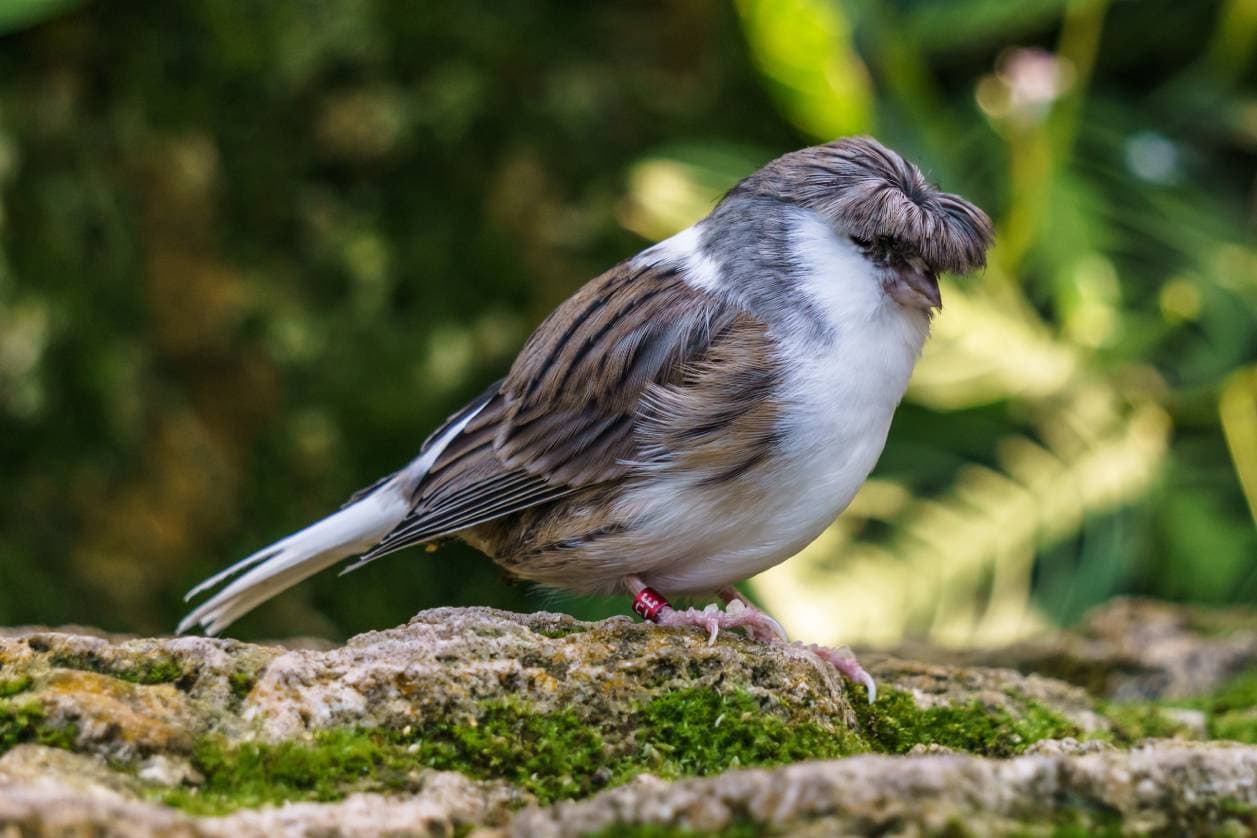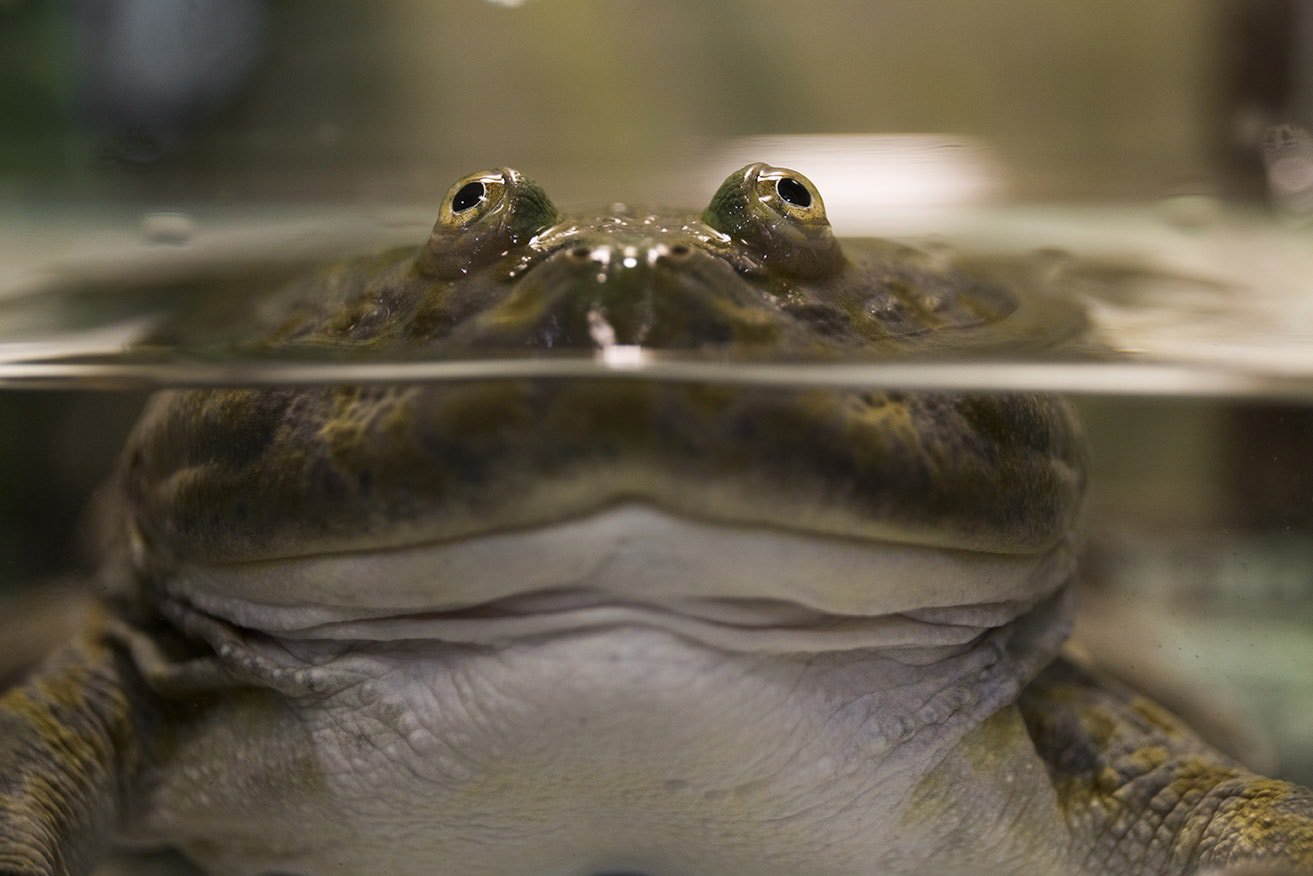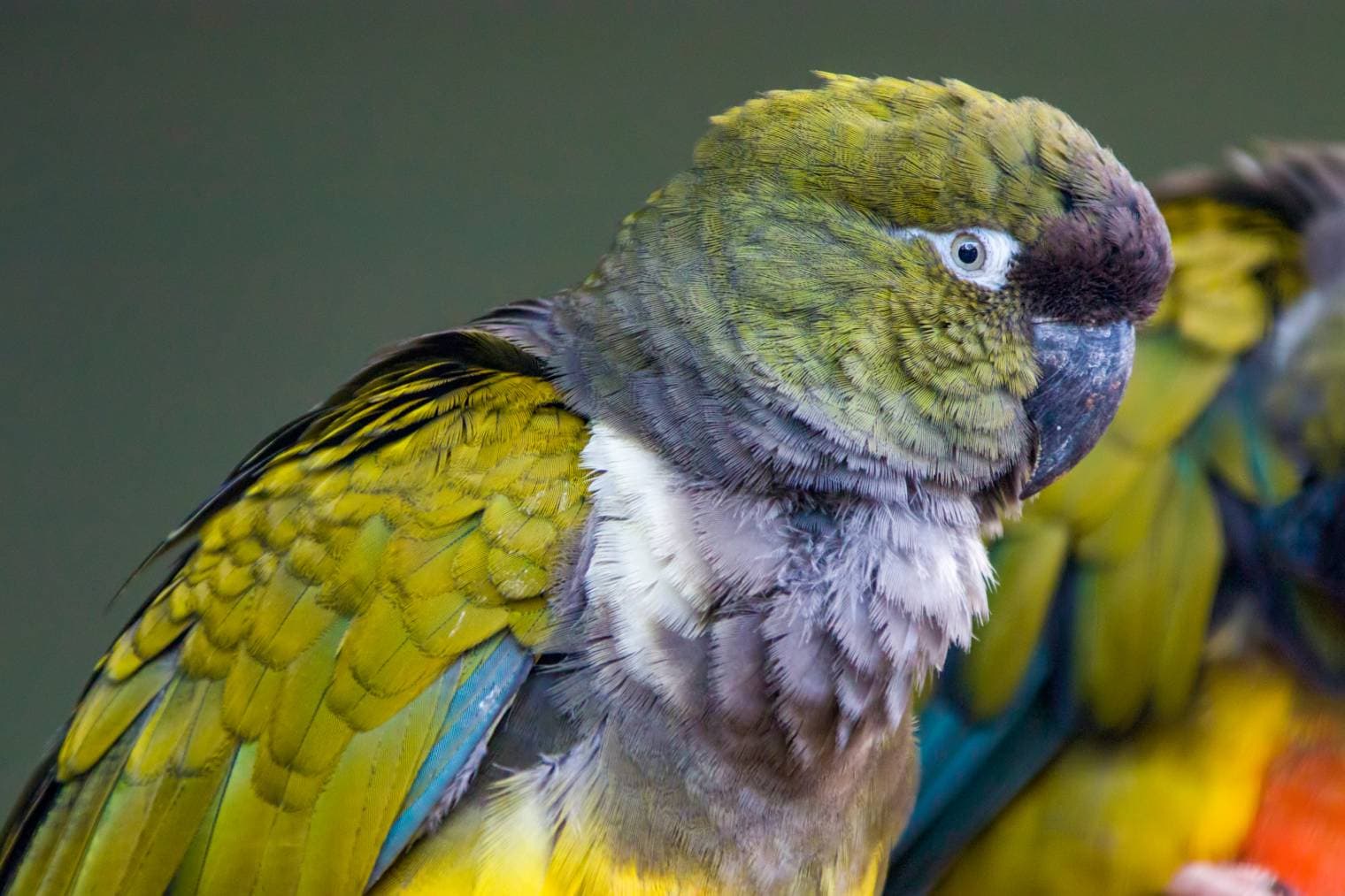Click to Skip Ahead
If there was ever a meme-worthy bird, it is the gloster canary!
The flat feathers on this bird’s head make it look like it has a bowl cut. This feature is even more striking among birds with different colored heads. For instance, you can find yellow-colored birds with brown “haircuts.”
Due to their unusual (and quite funny) appearance, this species has gained popularity over the years. But they still aren’t as popular as birds like cockatiels and parakeets. Of course, you shouldn’t get a gloster canary based on appearance alone. Consider whether you can meet their care needs before bringing one home. This way, you won’t have to figure out what to do with a bird you can’t care for.
Here, we discuss this avian species’ care requirements and help you figure out if it is ideal for you.
 Gloster Canary Species Overview
Gloster Canary Species Overview
| Common Names: | Gloster canary |
| Scientific Name: | Serinus canaria domesticus |
| Adult Size: | 4.75 inches max |
| Life Expectancy: | 10–15 years |
Origin and History
As pets, these birds originate in Gloucester, England, hence their name. But they are not found in the wild there. Instead, they were bred from a variety of other domesticated canaries. It’s a purely domestic species.
Initially, this breed was created in the 1920s. Its early history is a bit unclear, but by the early 1960s, the bird had been imported into the United States and slowly grew in popularity, primarily because of its beautiful singing abilities. It was especially popular among breeders and those who showed birds.
In 1976, a gloster canary won best-in-show,1 signifying their takeover of the canary show ring. Today, it isn’t odd for most entries to be canaries, though they aren’t extremely popular as pets.
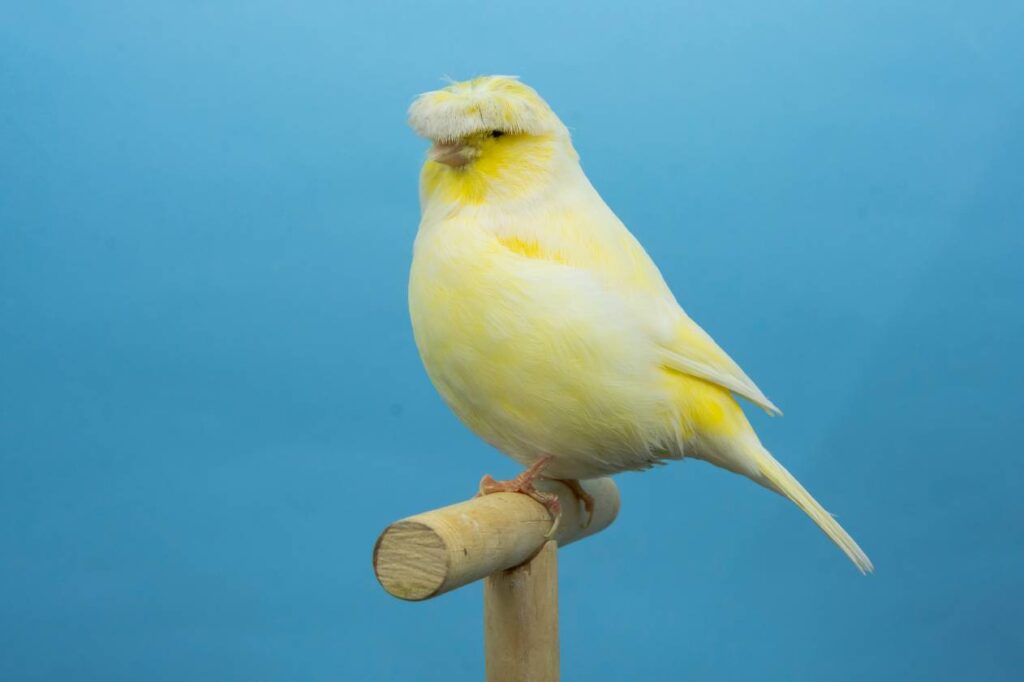
Temperament of the Gloster Canary
Gloster canaries as pets were developed to be left alone and listened to, not handled. It isn’t that they are prone to biting; they are just delicate compared to other species. They aren’t birds that can be left out to explore or perch on your shoulder for hours. If you’re looking for a interactable species, this isn’t it.
Gloster canaries tend to be shy and easily scared, which is one reason that they prefer to stay in their homes. They are charming to watch. While they aren’t as active as some other species, they will spend plenty of time moving around the cage. They may even interact with their owner from the comfort of their cage, though not all of them are that receptive.
These birds’ personalities can vary quite a bit. Some are more interactive and friendly, while others prefer to be left alone. They are not hands-on pets by any means.
For the most part, they are territorial. Only one should be kept in a cage. Otherwise, dominant behavior can get out of hand. This situation can be rather unfortunate for the submissive bird.
- Beautiful singing voice
- Hands-off
- Easy to care for
- Timid
- Territorial
Speech & Vocalizations
Canaries are well-known for their beautiful singing; it’s one of the reasons they’re so popular. The gloster canary is no different. These birds sing a lot. Their voice is relatively similar to a human whistle, which is typically pleasant to the ear. They don’t tend to do the beeps and squawks of other species.
That said, male gloster canaries do most of the singing. The females don’t vocalize much, and neither do juveniles. If you want a bird that will make tons of vocalizations, you need a mature male.

Gloster Canary Colors and Markings
There are two major types of gloster canaries. Both come in various colors, including yellow, brown, frost, white, and cinnamon. Their coloration can vary a lot due to selective breeding.
This species did not develop naturally in the wild. Instead, it was the result of extensive breeding in captivity, which led to many different colorations and markings. Nearly all of these birds look unique. Their color variations do not have specific names, as there are so many of them. They are a bit like dogs in this instance.
The two main types are distinctive, though:
- Coronas: This is the most common Gloster canary variant. Its flattened feathers on top make it look like it has a haircut, and many people prefer these birds for this reason.
- Consorts: This type of gloster canary doesn’t have flattened feathers on top. Instead, their feathers stick up into a beautiful crest. This feature is quite eye-catching.
 Caring for the Gloster Canary
Caring for the Gloster Canary
Handling
Canaries are a somewhat social species, just like every other bird. They will need interaction with their owners. You can’t simply ignore these birds all day!
But that doesn’t necessarily mean you need to interact with them like other birds. They aren’t best for handling due to their timid nature. You’d likely scare them more than anything. Instead, they appreciate hands-off interactions. Don’t plan on taking your gloster canary out much to handle it, but you should talk to it through its cage.
Overall, these canaries do need quite a bit less interaction than other pet birds. If you’re looking for a hands-off species, this one may be a solid option.
Housing
This species is quite territorial with others of their kind. Therefore, it is best to keep them in their aviary. Like all birds, the gloster canary needs exercise. Due to their timid nature, you will need to house them in a decently sized cage.
They will not enjoy exercising outside of their cage like many other species. For this reason, they tend to take up more room than other birds. Their cage needs to be large enough for them to spend 99.9% of their time.
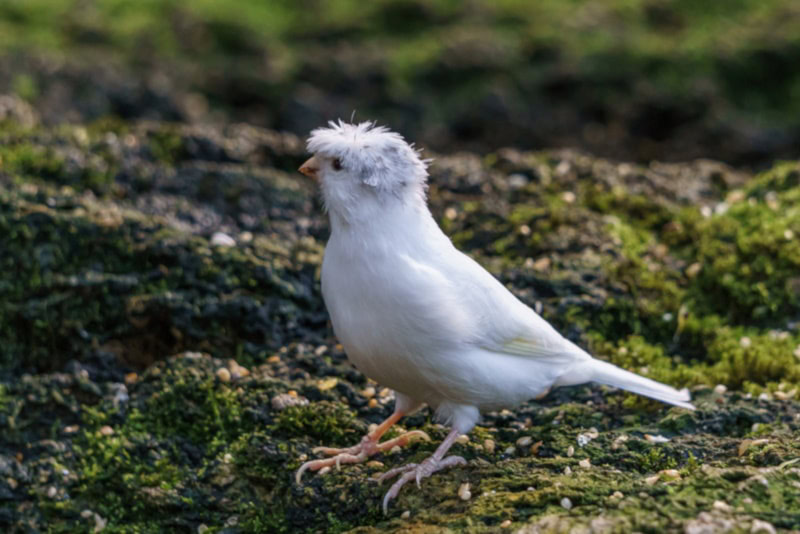
Common Health Problems
The gloster canary is a healthy species. It’s lived in captivity since the beginning of its existence, so it’s well adapted to human homes.
Since most health problems in birds are less treatable than in other pets, prevention is essential to their overall health. Science just hasn’t caught up to the needs of pet birds as it has for cats and dogs. These canaries should be kept away from drafts and protected from drastic temperature changes, and this can cause severe respiratory problems, which all birds are prone to.
Canarypox can be transmitted through mosquitoes, but this only occurs in birds housed outside (unless, of course, you have a bunch of mosquitoes in your house!). They may also get mites. All varieties may infect these birds if given a chance. Luckily, these are more treatable than some of the other health problems that gloster canneries can develop. They can still be pesky and challenging to get rid of, though.
Most birds have to be treated more than once. The proper conditions and diet are vital to keeping your bird healthy. In captivity, many canaries live to be about 14 years old if they are cared for properly.
Diet and Nutrition
Sadly, nutrition is a widespread problem with captive birds. While they naturally eat a wide variety of different foods, they often eat the same ones day in and day out in captivity.
Wild canaries eat a variety of different seeds for the most part. Seasonally, they may also consume fruits, berries, and insects. Unfortunately, most commercial diets choose seeds that do not have much nutritional value. Canaries are also known to selectively eat from seed mixes, which can limit their nutrition even more. For the most part, seed-only diets found commercially are not nutritionally complete for canaries. These include millet and “honey sticks.”
Instead, you should offer your bird a pelleted diet that is designed explicitly for canaries. It will contain all the vitamins and nutrients your pet needs. Your gloster canary can be fed a small number of seeds, but pellets should make up 80% of its diet. The other 20% should preferably be made up of fruits and veggies.
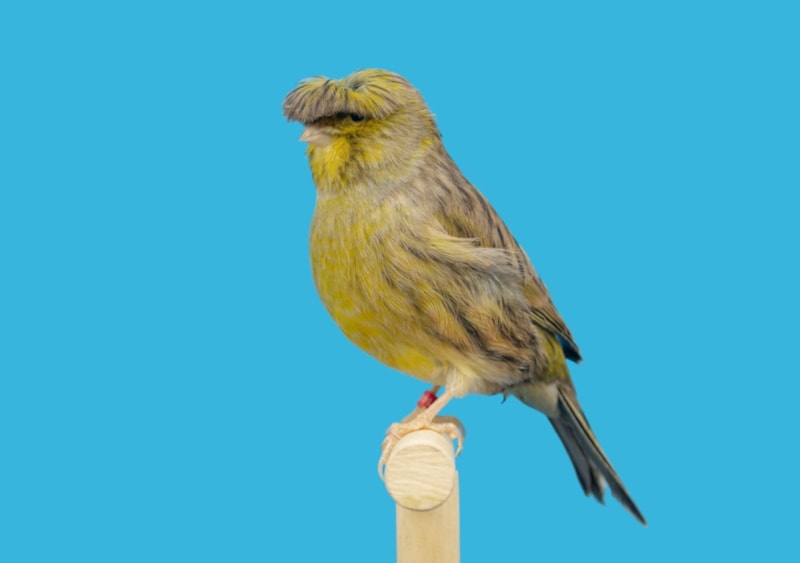
Exercise
Gloster canaries do need regular exercise, just like every bird species. However, they are often too shy to feel comfortable outside of their cage. Some hand-raised birds may be fine with being with their owners in a quiet area for a short period, but most will feel much more comfortable when left alone.
Therefore, it is not practical to take these birds outside of their cages to exercise, as other species often enjoy. Not only will they likely be scared, but most won’t also exercise when they feel insecure. Instead, they require a giant aviary in which they can meet their exercise needs.
Often, canaries take up a bit more room than other birds for this reason. They need a flight cage that they can spend much of their time in. You can’t rely on regularly taking them out for exercise.
Where to Adopt or Buy a Gloster Canary
Canaries are usually widely available. However, specific species can be hard to find, like the gloster canary. In these cases, it is best to go through a breeder. While this species isn’t widespread, there are quite a few breeders around the world, so you should be able to find one close to you.
Since these birds only breed once a year, you’ll likely have to wait until slightly after the breeding season to adopt one. This could mean waiting over a year to receive a bird after you contact a breeder.
Due to their long lifespan, you can often find this species at bird rescues. But avian rescues are more challenging to come by than those aimed at traditional pets. It largely depends on your area.

Final Thoughts
Like all canaries, the gloster canary is well-known for its excellent singing voice. If you’re looking for a bird to fill your home with music, this may be the one for you. However, they are also a hands-off species. They aren’t as social as other birds. They require some interaction but aren’t suitable for regular handling. Instead, they are more of a bird that you sit and watch, not one you cuddle with.
If you’re looking for a low-maintenance bird, the gloster canary may be a suitable option.
- Related Read: Best Talking Pet Bird Species
Featured Image Credit: Oleg Mayorov, Shutterstock
